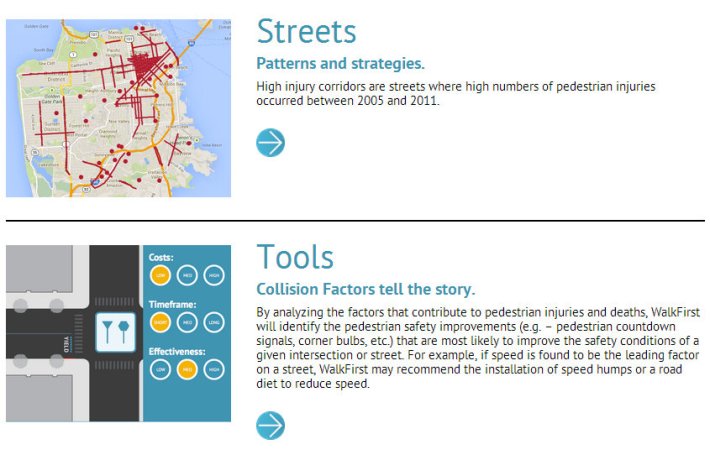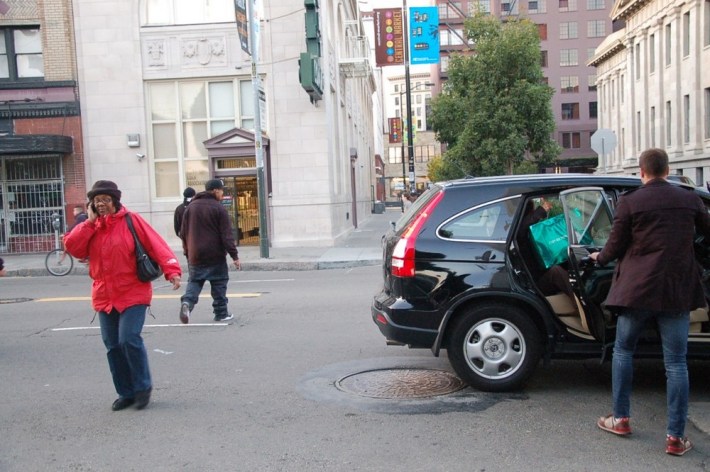
The city recently launched the WalkFirst program to lay a data-driven, participatory foundation for the effort to attain the main goal of its Pedestrian Strategy -- cutting pedestrian injuries in half by 2021. In the coming months, staff from the SFMTA, the Planning Department, the Controller's Office, and the Department of Public Health will field public input on dangerous streets and release new data illustrating the toll of pedestrian injuries and deaths.

To start, the new WalkFirst website has easy-to-use, interactive tools showing where most pedestrian crashes occur, the factors that cause them, and the kit of street design tools to reduce them. An online survey also allows people to weigh in on how pedestrian safety funding should be prioritized.
"For the first time, San Francisco will be investing in projects that are data-driven and focused on the most dangerous streets for pedestrians," said Walk SF Executive Director Nicole Schneider. WalkFirst is "a step forward for using the data that we have to the make the biggest impact."
The feedback from the website will inform a draft plan for safety improvements scheduled to come out in January, with adoption by the SFMTA Board expected in February. The plan will guide an expected $17 million in safety improvements over the next five years. "By combining rigorous technical analysis with significant community outreach, we will target our investments in the communities that need them the most," SFMTA Director Ed Reiskin said in a statement.
The city's goals include "upgrading" 70 miles of streets where injuries are most concentrated -- 5 miles per year through 2021. Another aim is to extend pedestrian crossing times at 800 intersections -- at least 160 annually. Schools and senior centers with high rates of pedestrian injuries will also be targeted for improvements, while the SFPD is expected to beef up its "Focus on the Five" effort to prioritize traffic enforcement efforts against the most dangerous violations at the most dangerous locations. (Not all SFPD captains appear to have gotten that memo.)
City agencies are also working on a report providing a fuller picture of the economic toll of pedestrian injuries, as well as the benefits of reducing them. As we reported in 2011, DPH and the University of California, SF estimated that the costs of medical treatment, emergency services, and other impacts of ped crashes add up to about $76 million annually. The WalkFirst report is expected to expand upon the economic ripple effects of traffic violence.
"Every life and injury is incredibly valuable, but from a decision-maker's perspective, it's also helpful to understand how much this is costing us to help make the case for the improvements that are needed," said Schneider. "It costs way more to treat someone who's been injured than it does to prevent the injuries in the first place."
The WalkFirst website and ongoing public workshops are also intended to help educate the public on the actual causes of pedestrian crashes, countering the all-too-common assumption that the victim is to blame. As we saw last week, even the SF Fire Chief mistakenly told an SF Examiner reporter that pedestrians are at fault in 74 percent of crashes, when the actual number is about 33 percent.
"The more that people understand the proven safety measures, and how effective they can be, the more we can get to more productive conversations around what we can do as a city," said Schneider. "You hear a lot in the media that some of these improvements are planned as a war on cars or something, and that's not the case. The case is that people are getting hurt on our streets, and we know how to prevent that."




